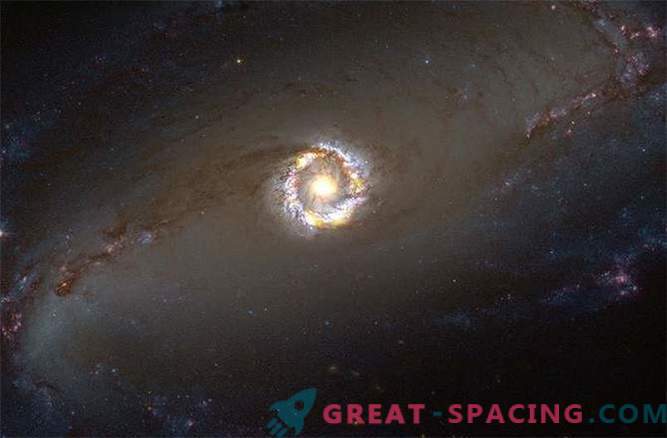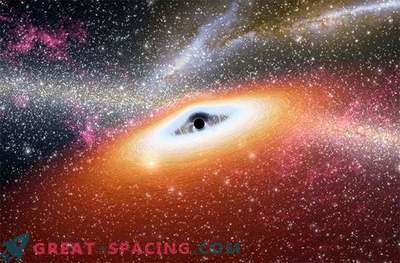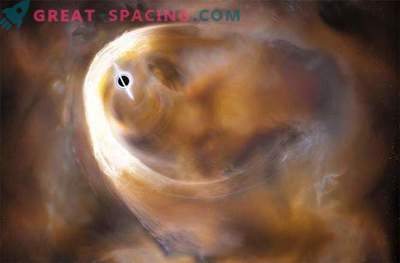
For most people, the prospect of measuring the exact mass of giant space objects traveling in the universe seems unreal. But, after installing in the north of Chile the latest antenna of the ALMA radio telescope, which works with both millimeter and submillimeter wavelengths, this task has become quite feasible. The antenna field of the giant ALMA occupies 16 kilometers of the Atacama desert and unites 66 antennas. They all work together, as one high-precision huge telescope. However, determining the exact mass of supergiant black holes located at distances of millions of light years from the surface of the Earth is far from simple.
Where do black holes lurk?
Astronomers have long ago revealed that such cosmic bodies, possessing a gigantic mass, are concealed inside the nuclei of most galaxies. These objects were formed as a result of the evolution of their host galaxies, over long billions of years. And their study is a priority task of modern astrophysics. Black holes make a big contribution to the formation of new stars. They, like all living objects of the Universe, gradually grow and evolve, having a significant impact on the interstellar medium. There are several ways to determine the mass of these whopper. To select each of them, certain criteria are evaluated: the distance of the object, the type of galaxy and others.
Monster in the Milky Way
Our Milky Way also has a supermassive black hole in its core. She was seen in the constellation Sagittarius, as a powerful source of radio waves. Astronomers, using incredibly accurate infrared telescopes, were able to track the trajectories of other stars around this point, radiating the most powerful radio waves. As a result of such studies, the mass of this black hole, which is 4 million times the mass of our star, the Sun, was determined.
Is it possible to measure black holes in the structure of the nuclei of distant galaxies?
Measuring the mass of the cosmic monster nearest to Earth is not so difficult for modern astrophysicists. After all, it is located very close to our earthly observatories - "only" 25 thousand light years. How about determining the size and mass of black holes hidden in the nuclei of other galaxies? They are so far from the Earth that measuring the speed of rotation of stars in their cores is impossible even with the use of infrared telescopes. Scientists try this method: they find radio-bright objects of mega-chasers (quantum generators that emit electromagnetic waves in the centimeter range) and watch them move around the center - the black hole. Megamasers play the role of a lighthouse, but unfortunately for astronomers, they are not in all galaxies.

Another method is also practiced: the study of the movement of ionized gases inside galactic nuclei. There is an algorithm for calculating the mass of black holes based on the speed of movement of such gas clouds. This method can only be used to measure objects in elliptical galaxies and is completely unsuitable for determining the mass of supermassive black holes hiding in the nuclei of spiral-shaped galaxies. The possibility of such measurements has only the super-giant telescope ALMA.
What did the ALMA telescope learn?
The spiral galaxy NGC 1097, which is almost 45 million light-years distant from us and is located in the southern hemisphere constellation Pec, recently became interested in a group of scientists led by Kyoko Onishi. They studied the configuration and speed of movement around the nucleus of the molecules of two substances: hydrogen cyanide (HCN), formylium (HCO +). Then, using computer models developed with the ALMA telescope, they were able to ascertain that such indicators are characteristic of black holes weighing 140 million solar masses. It turns out that the black hole of the NGK 1097 galaxy is supermassive. It is 35 times larger than ours, located in the Milky Way.
This study was the first to be carried out using ALMA in a spiral-shaped galaxy with a jumper. Now astrophysics, using this model, will be able to measure other massive space objects. These studies will help humanity understand how they affect each other and other cosmic bodies.











































